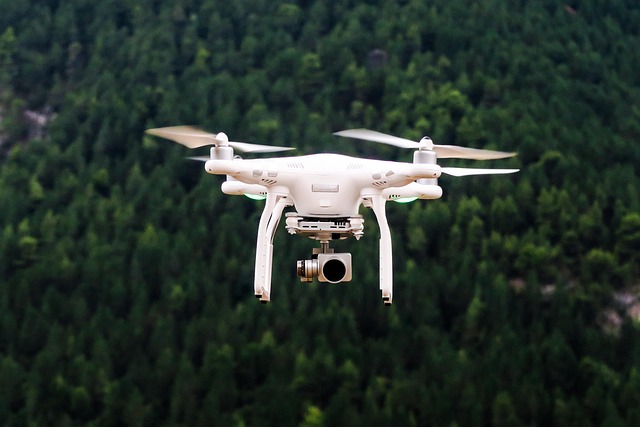In recent years, Drone Technology has moved beyond military use and recreational hobbies to become a transformative force across industries. These unmanned aerial vehicles (UAVs) are now shaping agriculture, healthcare, logistics, filmmaking, and even disaster management. With their ability to reach remote locations, capture aerial data, and perform tasks faster and safer than humans, Drone Technology is redefining efficiency and innovation in everyday life
Table of Contents
.
.
Understanding Drone Technology
What Is Drone Technology?
Drone Technology refers to the design and use of unmanned aerial vehicles controlled remotely or autonomously. Equipped with sensors, cameras, GPS, and sometimes artificial intelligence, drones can perform a wide range of activities that were once costly, dangerous, or impossible for humans.
How It Works
At its core, Drone Technology relies on flight control systems, sensors, and connectivity. Operators control drones using remote systems, while advanced models employ AI and machine learning to make autonomous decisions. High-resolution cameras and mapping software allow drones to collect detailed data in real time.
Benefits of Drone Technology
Enhanced Efficiency
Industries using Drone Technology can complete complex tasks much faster. From surveying land to inspecting infrastructure, drones save time while reducing the need for manual labor.
Cost-Effectiveness
By replacing expensive equipment and manpower, Drone Technology lowers operational costs. Farmers, filmmakers, and logistics providers benefit from affordable solutions without compromising on quality.
Safety Improvements
Drone Technology reduces risks in hazardous environments. Drones are deployed in situations like wildfire monitoring, search and rescue operations, or high-rise inspections, protecting human workers from danger.
Data Accuracy
Equipped with advanced imaging and mapping tools, Drone Technology provides highly accurate data. This precision supports better decision-making in fields like agriculture, construction, and environmental studies.
Applications of Drone Technology
Agriculture
Farmers use Drone Technology for crop monitoring, soil analysis, and pesticide spraying. Real-time aerial imaging helps optimize resource use, increase yields, and promote sustainable practices.
Logistics and Delivery
E-commerce and logistics companies are exploring Drone Technology to deliver packages faster and more efficiently. Drones have the potential to reduce traffic congestion and bring goods to remote areas.
Healthcare Services
In healthcare, Drone Technology is used to transport medical supplies, vaccines, and blood samples to areas with limited access. This has proven especially vital during emergencies and natural disasters.
Filmmaking and Media
Cinematography has been revolutionized by Drone Technology, offering filmmakers stunning aerial shots at a fraction of traditional costs. News organizations also use drones for live coverage in challenging environments.
Disaster Management
When natural disasters strike, Drone Technology assists in search and rescue, mapping affected areas, and delivering emergency aid. This ensures faster response times and better coordination.
Challenges of Drone Technology
Regulatory Concerns
Governments face challenges in creating regulations for Drone Technology. Issues like privacy, airspace safety, and unauthorized drone usage require strict policies to balance innovation with security.
Technical Limitations
Despite advancements, Drone Technology faces limitations in battery life, payload capacity, and weather resistance. These constraints restrict the scope of certain applications.
Privacy Issues
Widespread use of Drone Technology raises concerns about surveillance and data security. Unauthorized aerial recording can infringe on personal and corporate privacy.
Cost Barriers for Small Businesses
Although drones are more affordable than ever, high-end models with advanced features can still be costly, making it difficult for small businesses to adopt Drone Technology fully.

The Future of Drone Technology
Integration with Artificial Intelligence
The next stage of Drone Technology involves AI-powered drones capable of analyzing data and making autonomous decisions. This will enhance efficiency in industries like construction, defense, and logistics.
Expansion into Urban Air Mobility
Drone Technology is paving the way for air taxis and smart city logistics. Urban areas may soon see drones transporting people and goods, reducing traffic congestion on the ground.
Role in Environmental Conservation
Conservationists are turning to Drone Technology for wildlife monitoring, forest preservation, and climate change studies. Drones provide data that supports global sustainability efforts.
Wider Accessibility
As costs decline and regulations mature, Drone Technology will become accessible to individuals and small enterprises, fueling creativity and innovation worldwide.
Human Perspective on Drone Technology
Shaping Workforce Roles
While some fear job displacement, Drone Technology is creating new opportunities in drone piloting, maintenance, data analysis, and AI integration. Workers are shifting toward higher-skilled roles.
Collaboration Between Humans and Machines
Rather than replacing humans, Drone Technology complements human capabilities. By handling dangerous or repetitive tasks, drones allow people to focus on decision-making, strategy, and innovation.
Conclusion
Drone Technology has grown into a vital tool that is transforming industries, improving safety, and delivering efficiency on an unprecedented scale. From agriculture and healthcare to logistics and media, its applications are limitless. While challenges like regulation, privacy, and technical constraints remain, the benefits far outweigh the drawbacks. As innovation continues and integration with AI expands, Drone Technology will play an increasingly significant role in shaping the future of society, making the world safer, smarter, and more connected.